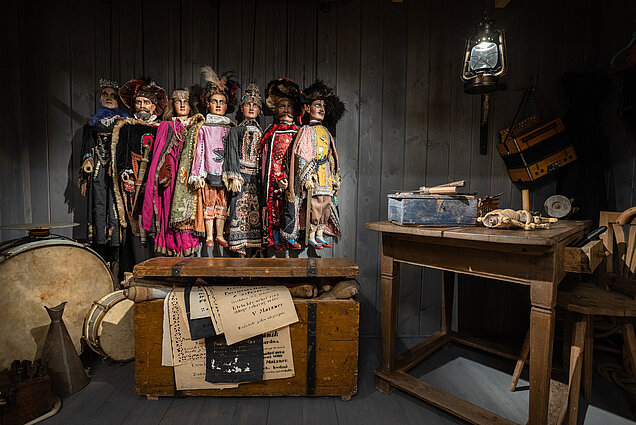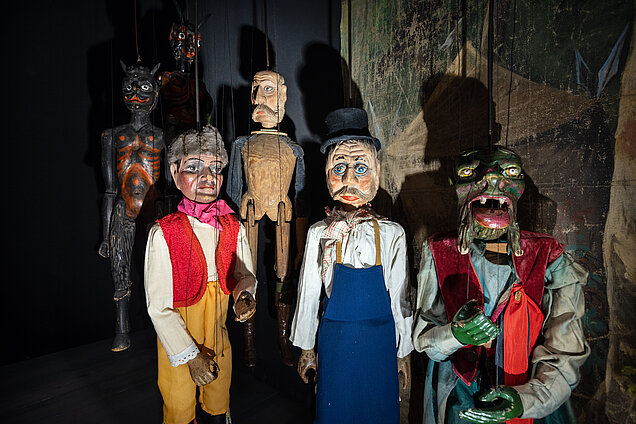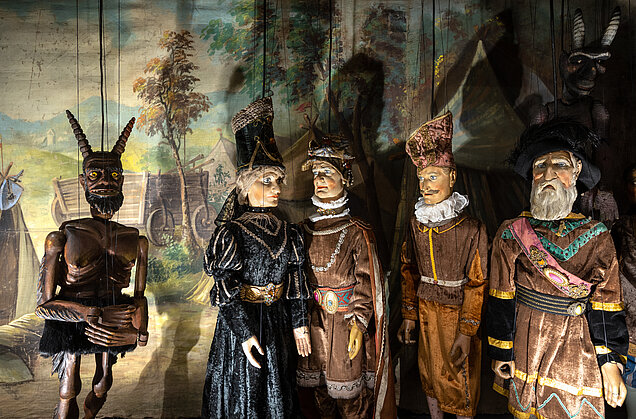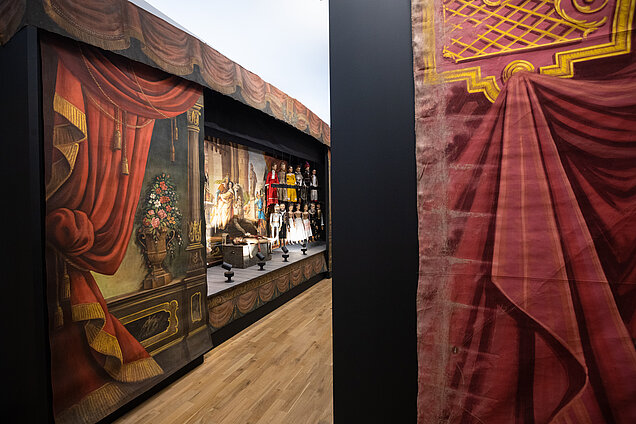Puppetry art
Back to Permanent exhibitions | Palace of the Nobles
The Puppetry Art exposition is an “exhibition” of the vast collection kept by Moravian Museum’s Theatre History Department. It guides through the two-and-a-half-century-long history of Czech puppetry, from its comedian beginnings in folk ambience up to its artistic era. In particular, it approaches its two characteristic forms, namely the traditional theatre of itinerant marionettists and the so-called family puppet theatre of the amateur period. Briefly, it also recalls modernist efforts to change puppet morphology and staging principle in the first half of the twentieth century, inspired by new artistic trends, which culminated in the birth of professional puppet theatre.
The older period of the exhibition presents the historic form of marionette theatre and gives to understand its social position and function. It shows the types and technology of puppets and stage sets which were most often used at that time, the typology of characters, the craftsmanship of the best woodcarving masters, the staging principle and the characteristic repertoire of the marionette theatre. Furthermore, it introduces many important puppeteer dynasties and families which were active in Moravia – the Flachs, Šimek, Pfleger, Kopecký, Kučera, Nový and others.
In the part of the exhibition presenting the younger period, we introduce a representative sample of industrially produced puppets and theatres by prominent Czech companies, from the most ancient, the so-called Alšovky (Aleš’s puppets), up to various newer products made by companies which were active until the end of 1940s. Via such puppets and theatres, we would like to recall and maybe slightly revive the extraordinary phenomenon of the family puppet theatre.
View photos from the opening ceremony (Palace of Nobles, 21/04/2022)
The oldest and rarest puppets in the collection of the Moravian Regional Museum come from the workshop of the carver Mikoláš Sychrovský from Mirotice, from about the middle of the 19th century. They were preserved in the collection of the puppeteer František Pfleger and in the collections of the Doležal and Kopecký families. Two generations of marionettes from the inventory of theatres of the Flachs family also belong to the rare ones. From the amateur puppet theatre period, among the rarest are the so-called Aleš's puppets from 1912 inspired by pictures by Mikoláš Aleš and four series of Decorations by Czech artists from 1913 to 1920. Furthermore, the later extensive interwar production of complete printed theatres and an endless number of diverse puppets of various sizes.



